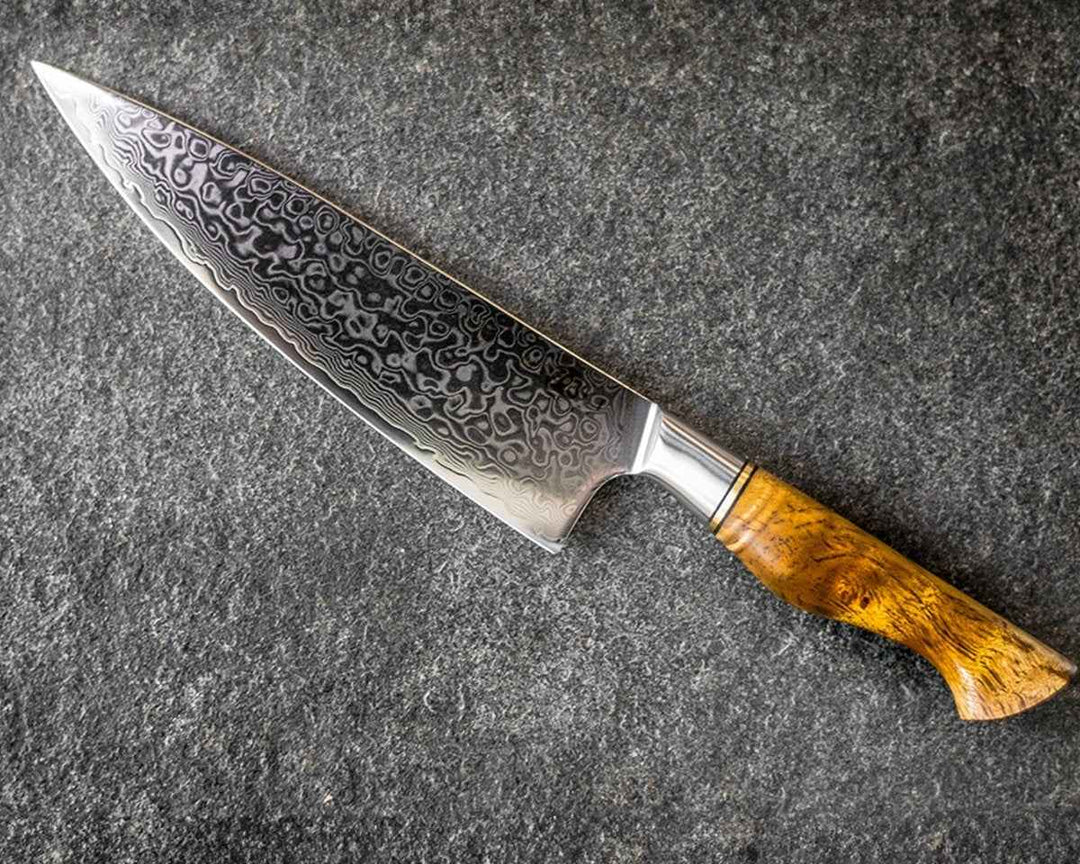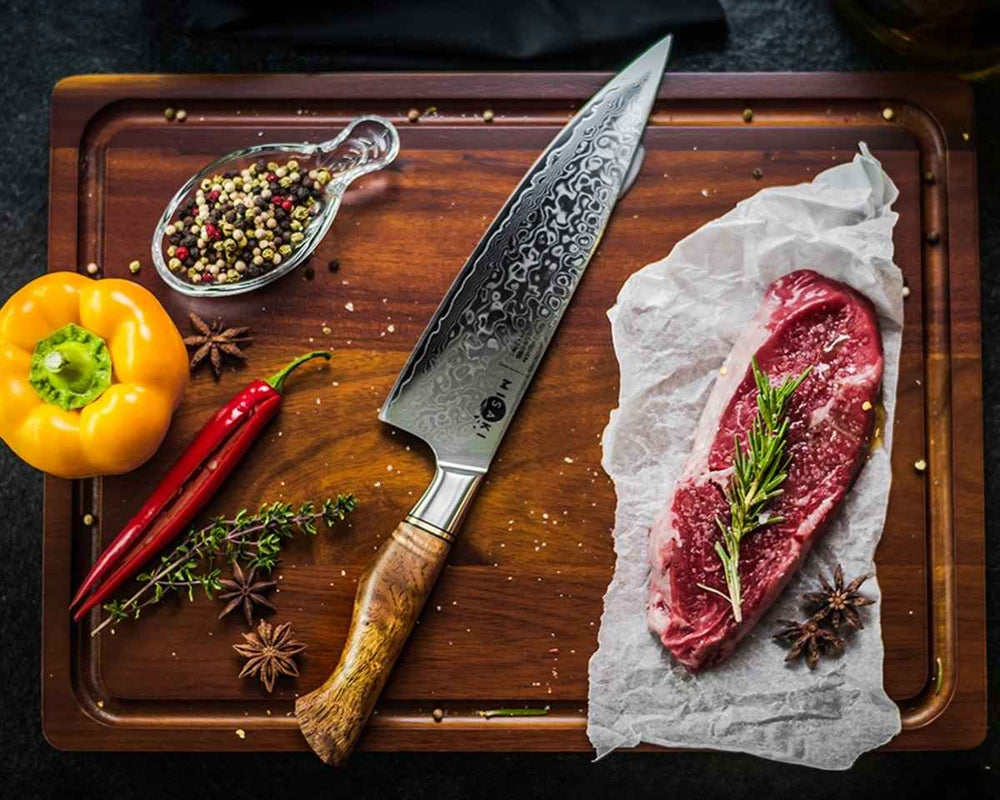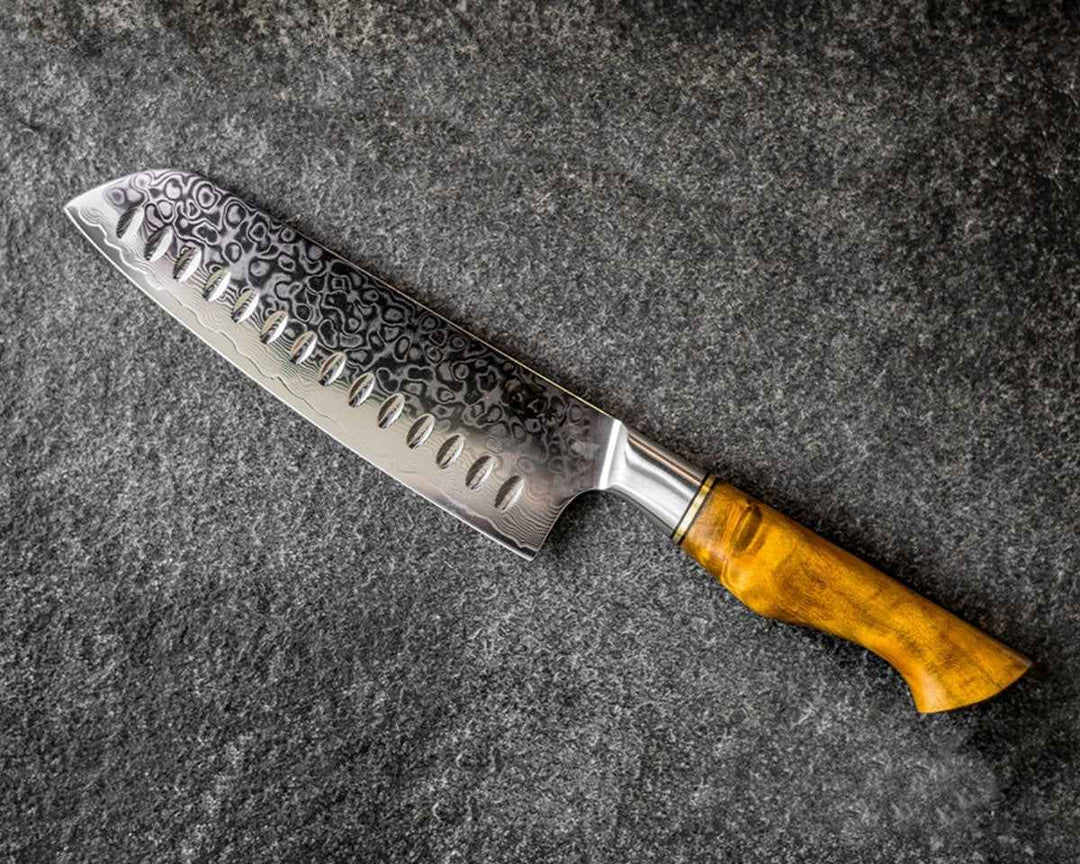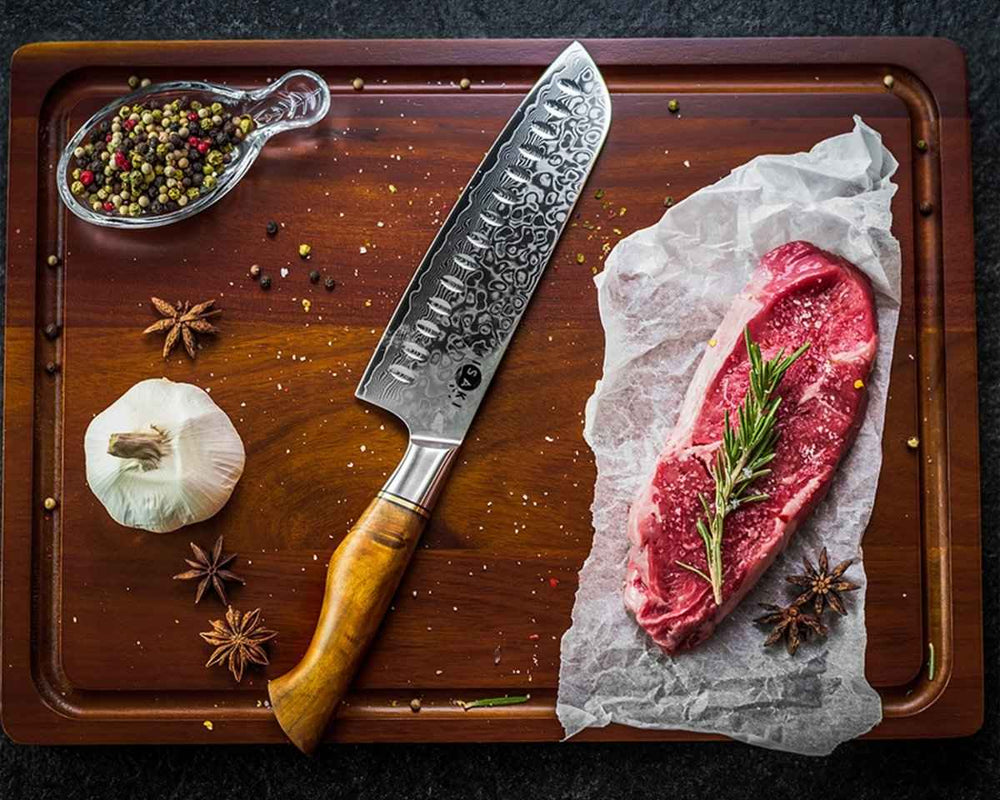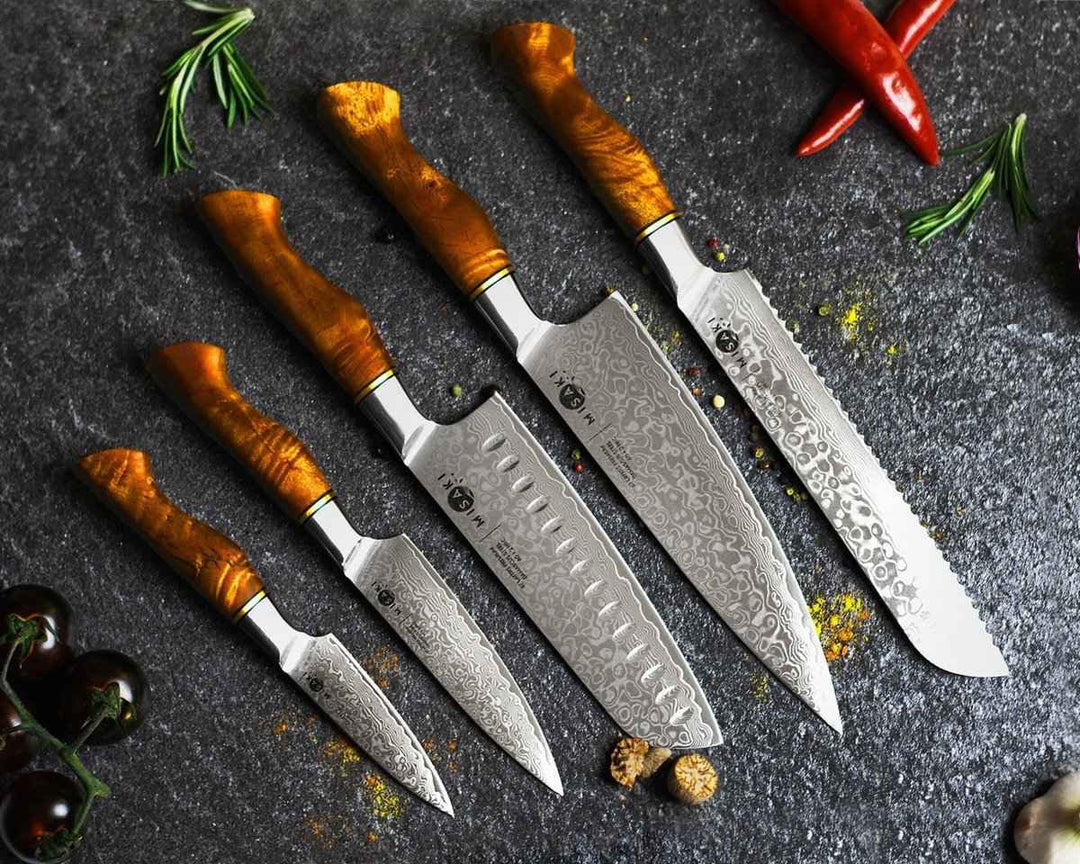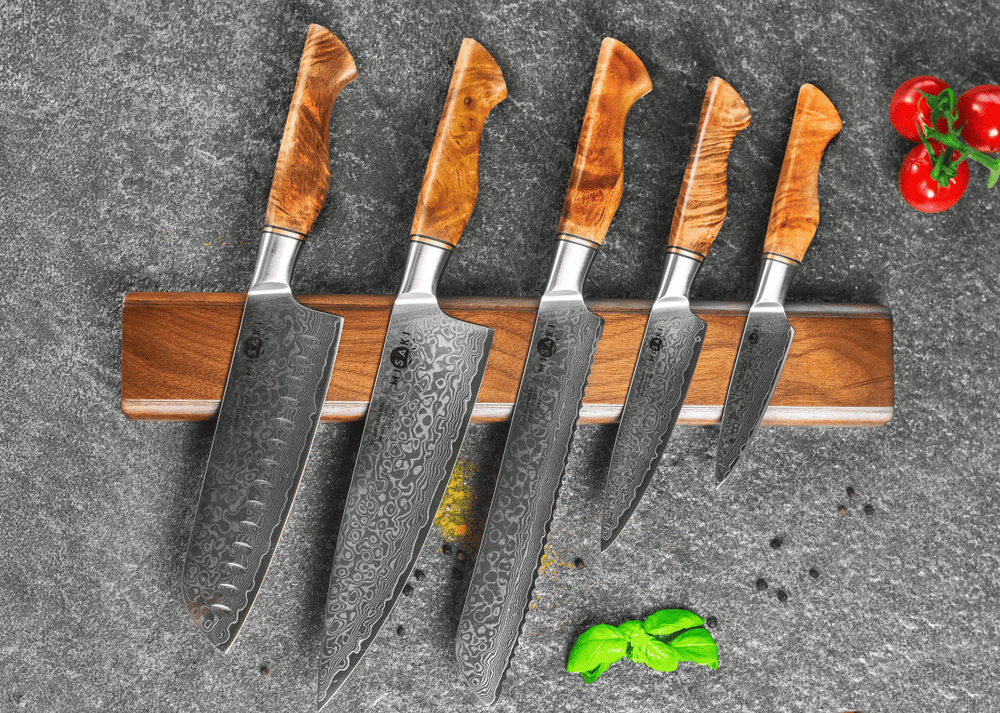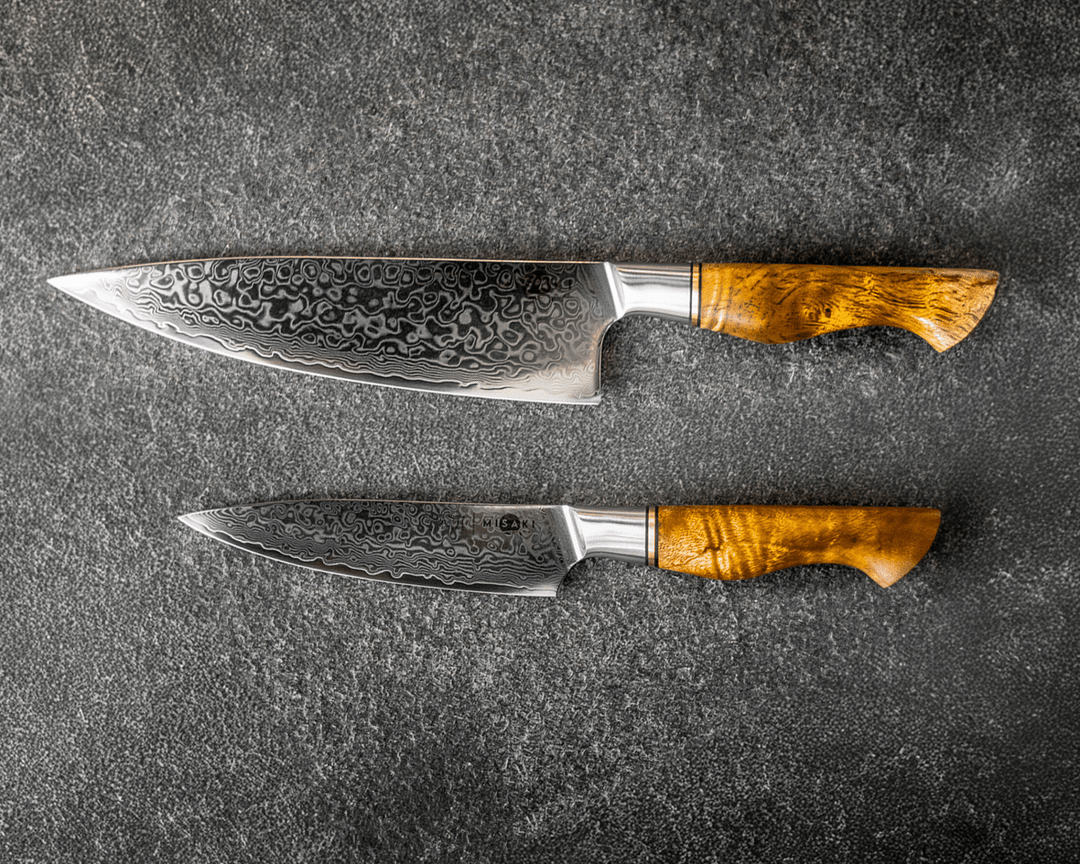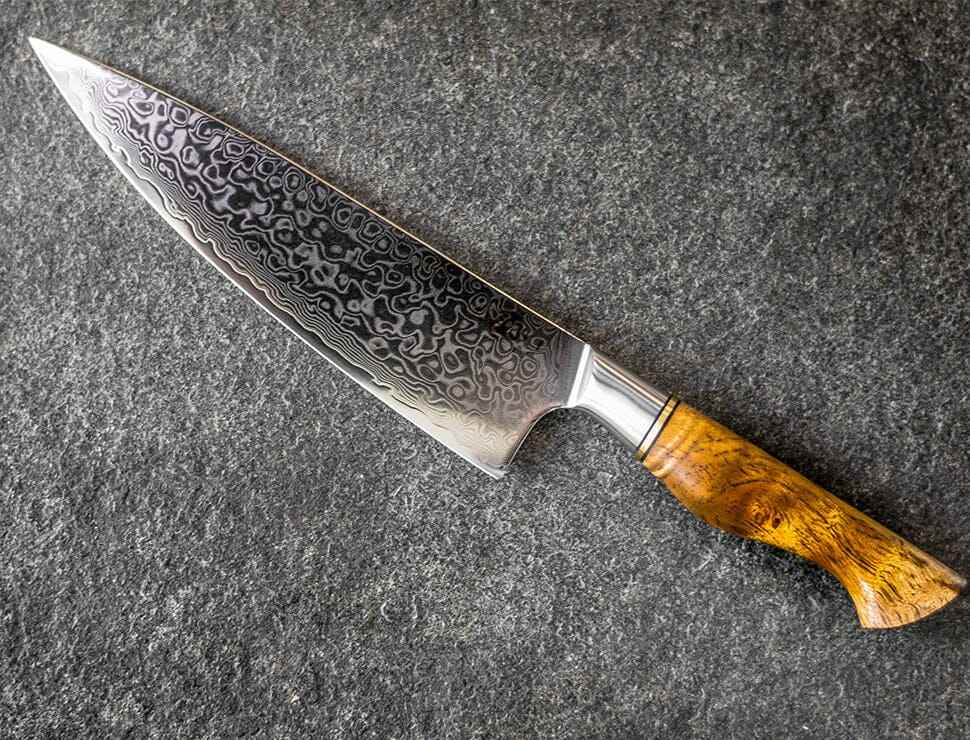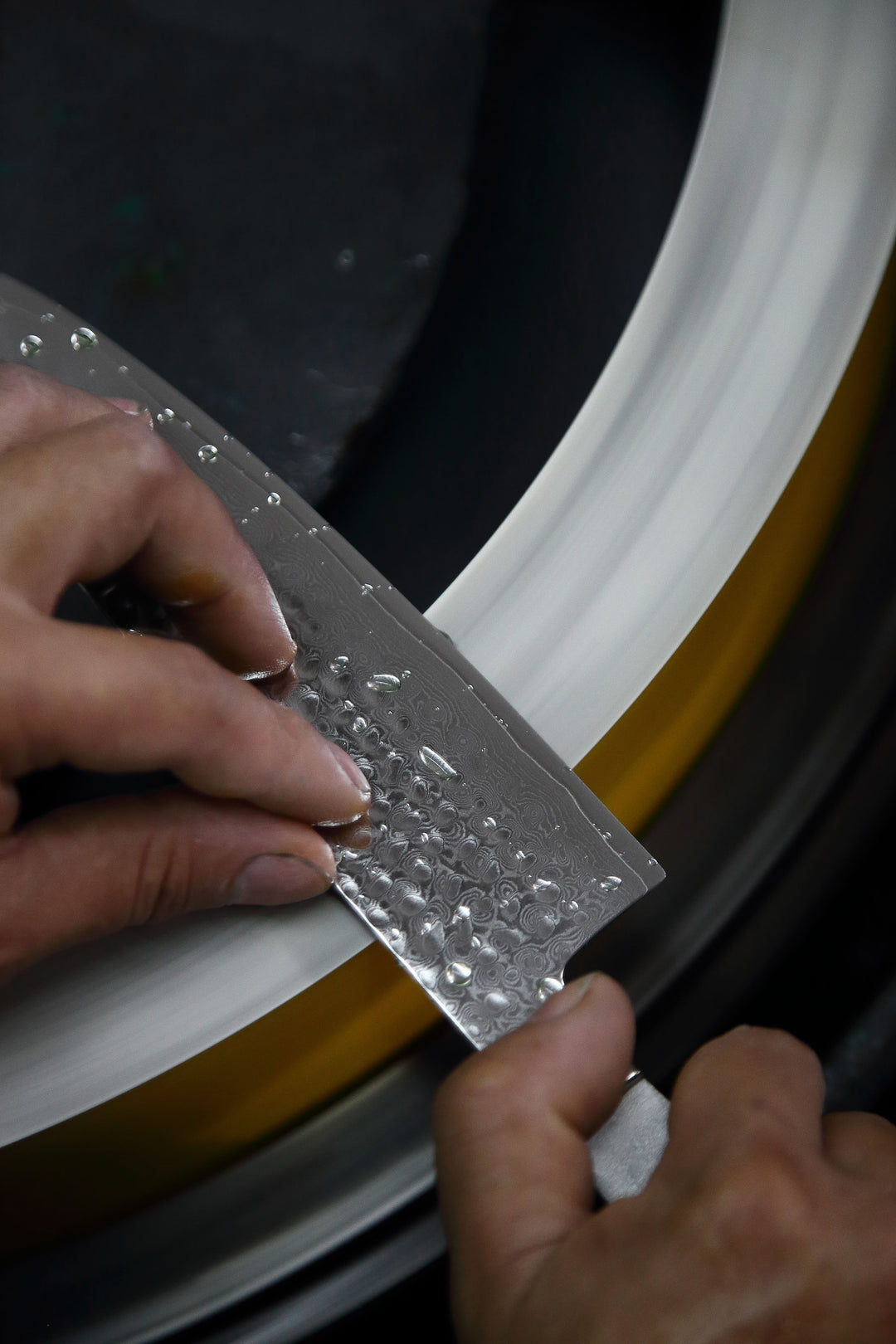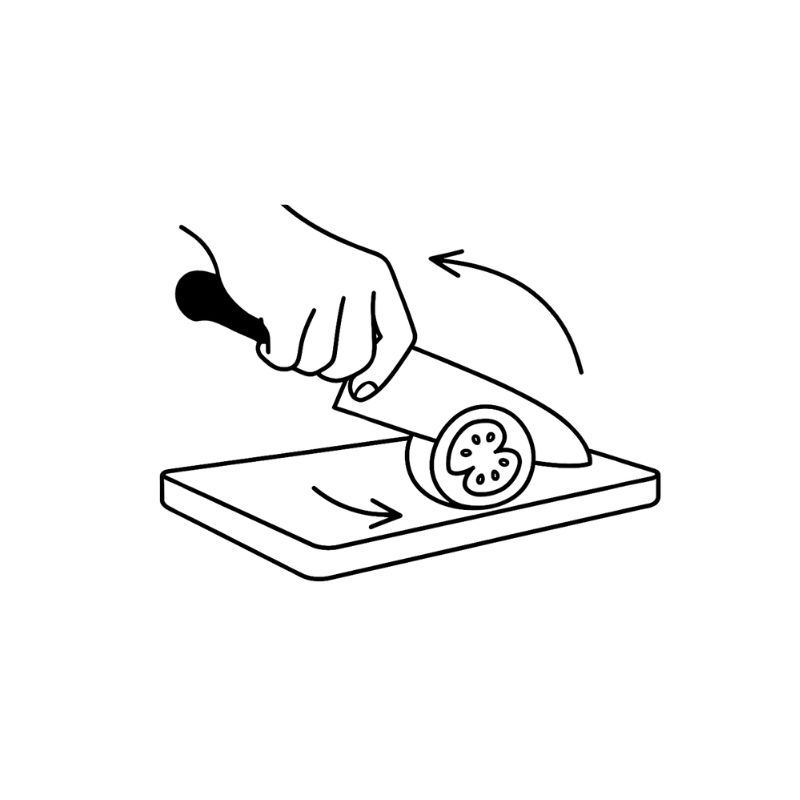Rockwell hardness (HRC): key to the quality of kitchen knives
1. Why the Rockwell hardness counts for kitchen knives
The quality of a kitchen knife, the heart of every kitchen, is largely determined by its hardness, measured on the Rockwell hardness scale (HRC). This value, determined through standardized tests, reveals how resistant a knife is to deformation and wear. A higher HRC value indicates that the knife is harder and more durable, which is crucial in the kitchen.
But choosing the ideal hardness requires a balance: Too hard a material can be brittle, while softer material dulls more quickly. Learn more about the significance of this scale and how to choose the perfect kitchen knife based on its Rockwell hardness. Dive into the world of high-quality kitchen knives and discover how the right tools can take your culinary skills to the next level.
2. What is the Rockwell hardness (HRC) and how is it measured?
The Rockwell hardness scale (HRC) is a widely used method for measuring the hardness of metals and other materials. It was developed by Hugh M. Rockwell and Stanley P. Rockwell in the 1920s and has since become established as a standard method in materials testing. The HRC scale is primarily used for high-hardness materials, such as steel.
In the Rockwell hardness test, either a diamond tip or a carbide ball point is pressed into the material. The determination of the hardness is based on the penetration depth of this tip under a specified load. This process measures the deformation of the material and is used for the HRC calculation.
The HRC calculation is based on the following formula:
- is the Rockwell hardness.
- is the measured penetration depth of the test specimen in millimeters.
- is the zero point penetration depth, which serves as a reference value and is normally 0.2 mm.
- The factor 0.002 is a scale factor for the HRC scale.
A table can display different HRC values along with the corresponding indentation depths and test loads for different materials or test conditions to illustrate the hardness measurement:
| HRC value | Penetration depth (mm) | Test load (kgf) |
|---|---|---|
| 30 | 0.123 | 30 |
| 50 | 0.171 | 50 |
| 70 | 0.234 | 70 |
| 90 | 0.309 | 90 |
| ... | ... | ... |
The HRC value is expressed on a scale from 0 to 100, with higher values indicating greater hardness. Different scales are used for the measurement, depending on the type of material and the testing conditions.
Overall, the Rockwell hardness rating is a proven method for determining the hardness of materials and plays a critical role in ensuring the quality and reliability of products that rely on the durability and performance of materials.
3. Why hardness is important for kitchen knives
The hardness of kitchen knives plays a crucial role in their performance and durability. Here's a discussion of the impact of hardness on kitchen knives:
-
Optimal cutting performance : A higher knife hardness often correlates with longer sharpness retention. This is especially crucial for precise kitchen tasks like cutting vegetables, meat, or fish. Knives with a higher degree of hardness allow for smoother cuts without damaging the food .
-
Wear resistance: Knives with a higher degree of hardness exhibit greater wear resistance and stay sharp longer. This reduces the need for frequent resharpening, which is especially valuable in professional kitchen environments. Our Damascus knives offer a selection of high-quality knives for the most demanding kitchen tasks.
-
Break resistance: Although harder knives stay sharp longer, they can be more brittle if misused. It's important to choose the hardness according to the intended use.
- Care and aftercare: Knives with a higher degree of hardness generally require more attention to care. They should not be cleaned in the dishwasher and require special sharpening techniques, such as whetstone sharpening. Proper care and aftercare are crucial to maintaining the knife's lifespan and performance.
4. Different degrees of hardness and their significance for knife qualities
The choice of hardness plays a crucial role in the quality and performance of kitchen knives. Below is an explanation of the meaning of different hardness levels and how they affect the properties of knives:
| Hardness (HRC) | Characteristics | Typical application |
|---|---|---|
| Under 52 HRC | Soft, flexible steel; faster loss of sharpness | Simple kitchen tasks, less demanding cuts |
| 52 - 58 HRC | Good balance between sharpness and flexibility | All-purpose knife for everyday kitchen tasks |
| 60 - 62 HRC | High sharpness and edge retention; ideal for precise cuts | Our Hikari knives for demanding kitchen tasks |
| 64 HRC and higher | Extremely sharp and durable, but demanding to maintain | Our Akane knives for professional chefs and demanding applications |
5. Conclusion: The role of Rockwell hardness in your kitchen
In summary, the Rockwell hardness (HRC) rating is a key factor in evaluating and selecting kitchen knives. This rating determines not only the sharpness and cutting quality of the knives, but also their wear resistance and overall durability. While a higher hardness rating promises improved cutting performance and reduced wear, it also requires careful handling and care. Choosing the right hardness rating depends on your individual needs and cooking style.
Whether you're a home cook or a professional chef, a high-quality knife tailored to your needs can make a significant difference in your cooking experience. At Misaki Knives, we offer a diverse selection of kitchen knives suitable for both everyday use and specialized culinary needs.
Discover our Hikari knives, with a hardness of 60-62 HRC , perfect for those seeking a reliable and versatile knife for everyday kitchen work. For those seeking the utmost precision and sharpness, ourAkane Messer, with a hardness of 64 HRC , is ideal. Each of our knives is crafted with the utmost care and expertise to enhance your culinary experiences.
Visit us at www.misaki-knives.ch and find the perfect knife that will take your cooking to a new level.




